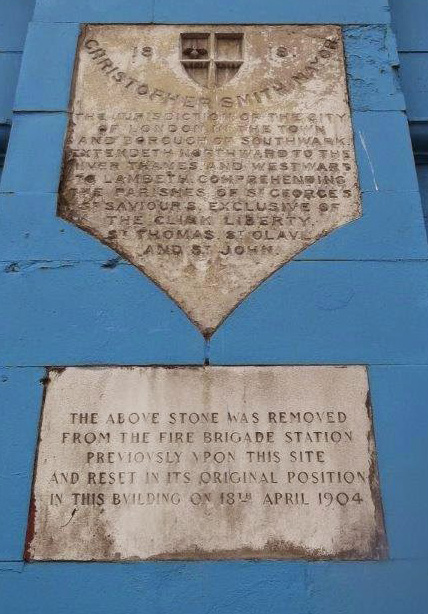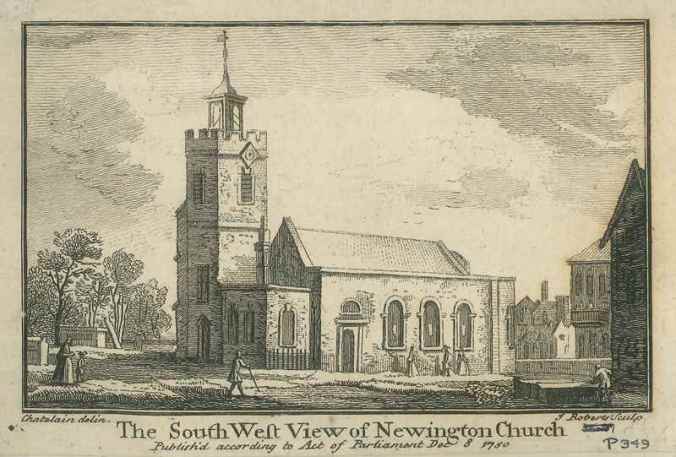The Old Kent Road has been an important thoroughfare since Roman times, connecting London to Canterbury and Dover. This short tour from Burgess Park towards Elephant and Castle takes in some Mayflower connections and a link to some much earlier pilgrims.
St Thomas-A-Watering, Old Kent Road
St Thomas-a-Watering is a very significant site in Southwark’s history, but it is easily overlooked amid the hustle and bustle of the junction of Albany Road with Old Kent Road. It was at this spot that pilgrims travelling from St Mary Overie (a predecessor of Southwark Cathedral) to the shrine of Thomas a Becket in Canterbury made their first stop to water their horses and take refreshment. The pond in Burgess Park was said to be where Chaucer’s Pilgrims took their horses for a drink.
St Thomas-A-Watering represented the southern boundary of the parish of St George the Martyr and as such also represented the limit of the City of London’s jurisdiction in Surrey. Once a year, the Lord Mayor and Sheriffs of the City of London rode in procession, all wearing scarlet gowns, over London Bridge to open Southwark Fair and to inspect the City’s boundaries at St Thomas a Watering. There is a plaque inlaid into the nearby former fire station that marks this spot.
The Mayflower connection comes from protestant martyr John Penry, who was executed here on 29th May 1593. His body was hung on a gibbet on the Old Kent Road. Some regard Penry, a Welshman, as the true founder of the Brownists, not Robert Browne. Penry sent a letter from the King’s Bench Prison, dated 24th April 1593, advising his followers to consider emigration. This is the start of the Pilgrims’ journey, first to Holland and then to America.

Plaque marking the southern limit of the City of London’s jurisdiction
Bricklayers Arms Roundabout, New Kent Road
The Pilgrim Fathers Memorial Church, which originally stood at Deadman’s Place in Bankside was relocated in 1864 to Buckenham Square, close to this site. Its gardens were named the Mayflower Gardens and contained a memorial to the ship; a sundial set on a large stone with a panel depicting the Mayflower on one side. When the Bricklayers Arms flyover was built in the 1970s there was much disruption. The Pilgrim church moved to Great Dover Street but Mayflower Gardens was left behind, complete with its monument. St Saviour’s & St Olave’s School for Girls was built close by, and the memorial is now inside.
St Mary Newington Church, Newington Butts
The original site of this church is now occupied by a park on the west side of Newington Butts. Thomas Gataker was Rector here from 1584 to 1593 before he became Rector of St Mary Rotherhithe. Later, Thomas Wadsworth was Rector, as well as being Pastor of the Pilgrim church. Nearby “Newington woodes” was recorded as the site of the arrests of some of Browne’s followers.
